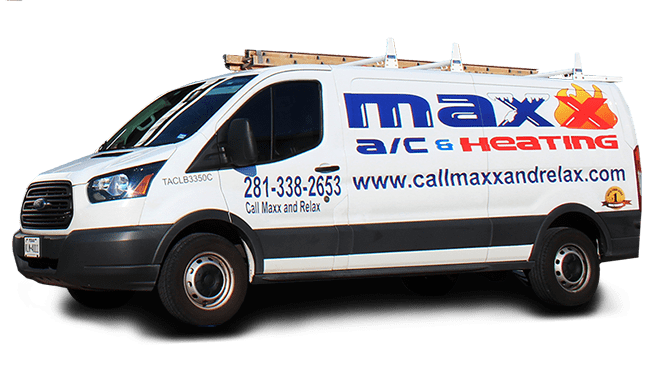Special Financing for 18 Months on a New Carrier® System
Check out new updates from REME Halo about COVID-19 here.
Our Services
Air Conditioning
There is no substitute for a hard-working air conditioner when the heavy heat of summer rolls around. If your AC system does fail, you want a fast and reliable solution.
Heating
At Maxx A/C & Heating, we give you more. Whether you are in need of heat pump repair or furnace replacement, it’s our mission to offer uncompromising service and quality products at fair prices.
Specials
At Maxx A/C & Heating, we pride ourselves on offering competitive installation and repair pricing. The deals listed on this page are fantastic ways to save.
Quality Air Conditioning Repair and Installation Services in League City, TX & Surrounding Areas
When it comes to home comfort, Maxx A/C & Heating is a leader in customer service, state-of-the-art Carrier products, and reliable workmanship. No matter what the Texas weather serves up, our family-owned-and-operated HVAC company is busy keeping families and businesses in comfort throughout the Houston Metro area.
Maxx is here when you need emergency air conditioning repair, an AC maintenance tune-up, better indoor air quality, or an HVAC installation. We will make it happen. We will do it right and we will stand behind our work.
Why Choose Us
Carrier Factory Authorized Dealer
Residential and Commercial
12-Month Special Financing with Approved Credit
Licensed, Bonded, and Insured
Nate-Certified Technicians
100 Percent Guarantee On All Work
Up-Front Pricing
Customer Care Specialists
24/7 Emergency Heating and AC Repair
BBB Accredited Business
We Fix All Makes and Models
Installation Specials and Online Coupons
![]()
Emergency Repair
When your heater or air conditioner isn’t working like it should, you want help fast. Our NATE-certified technicians are available for emergency air conditioner repairs. We fix all HVAC makes and models, and can usually restore your system with one service call. It’s easy to turn on your HVAC and forget it, but when there’s a problem, it can turn everything upside down in your home and business. If you have an AC emergency, turn the air conditioning system off and call the professionals at Maxx A/C & Heating.
![]()
Affordable Installation
Is it time to replace an aging furnace, heat pump or air conditioner? We know that a heating or air conditioning installation represents a substantial investment. We can help you choose an excellent system that increases your property value and lowers your utility bills. New HVAC systems are always more efficient than old ones, so your new heating or air conditioning installation comes with a lower operating cost and long term savings.
Call Us For A Free Estimate: (281) 338-2653

Healthy HVAC
HVAC systems need regular service to stay up and running, so don’t skimp on preventive maintenance. Keep your heating and cooling equipment healthy with an annual maintenance and you will save time and money on emergency repair costs and utility bills. When you need heating or air conditioning repair, we’re here around the clock. One quick call to the emergency team at Maxx A/C & Heating at (281) 338-2653 and we’ll have a service vehicle on its way to your home or business. We serve League City, Pearland, Friendswood and Houston Metro area. Read More
Call Maxx & Relax
We have been customers of Maxx AC & Heating since 2014. We purchase the preventative maintenance coverage from year to year. The customer service desk is always very helpful and kind. I really appreciate the email notification explaining who the tech is, with his picture, and when the tech is on route to our location. The technicians are always courteous and knowledgeable, and arrive as notified. Any problems with our unit are fully explained and options given. Maxx AC & Heating is definitely 5-Star, and we fully recommend their services.
Maxx installed a new variable speed A/C system in our two story home in April 2018. With two thermostats it works well to set upstairs temperature different from downstairs. The crew were polite and professional and finished the work in one long day. They returned to make adjustments when requested.
Maxx has been servicing our HVAC needs for over twenty years. We are very pleased with the company.
Very Impressed! I called Maxx A/C for one of my rental homes. The duct work was in need of a quality company to clean the mess of many years. There crew was on time, neat and friendly. The office staff provided me with a reasonable and competitive quote. Thank you for a job well done. I highly recommend MAXX A/C .
Products we offer





